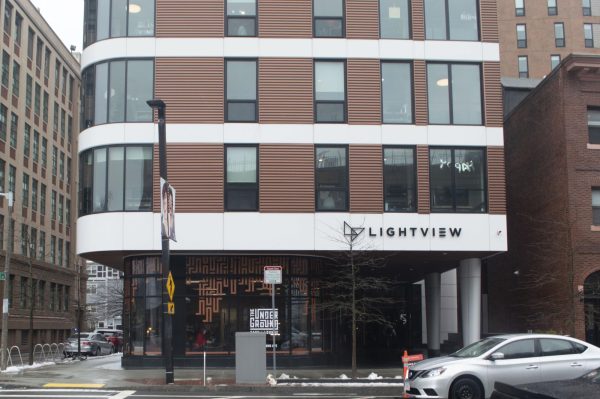ICE detainees in Suffolk County protest living conditions
Photo courtesy Creative Commons
Many Massachusetts sheriff departments, including the one in Suffolk County, have contracts with ICE allowing them to house undocumented immigrants in local jails during the deportation process, even if no crimes have been committed.
March 13, 2019
As many as 70 people detained by immigration officers refused food to protest the conditions inside the Suffolk County House of Corrections, according to a Feb. 17 statement from the Rhode Island-based community group Alliance to Mobilize Our Resistance, which initially reached out to the protesters in early February. The hunger strike ended Wednesday, Feb. 20, after detainees were threatened with transfers and solitary confinement, but not before the story gained national attention, reigniting the debate about the legality of Immigration and Customs Enforcement, or ICE’s involvement in local law enforcement.
Many Massachusetts sheriff departments, including the one in Suffolk County, have contracts with ICE allowing them to house undocumented immigrants in local jails during the deportation process, even if no crimes have been committed. The federal government covers the cost of holding the detainees, generating millions of dollars in revenue for the state.
The hunger strike began Feb. 15, after detainees complained of “inhumane conditions” in the jail, according to the Associated Press, including abusive guards, broken bathroom fixtures and bad food. The Alliance to Mobilize Our Resistance, along with the Fighting Against Natural Gas, or FANG Collective, told WBUR News they have been in contact with the detainees and are challenging the legality of their detainment.
The FANG Collective also published a letter from the men, detailing alleged abuse at the hands of two employees of the House of Corrections, listed as Lt. Cockley and Corrections Officer Wilson. The letter also described a lack of access to toilets, hot water and fruit, as well as prison employees who were unreceptive to their requests.
“Whenever we request grievance forms, the C.O.s would tell us it wouldn’t matter because it would just go in the trash,” the letter stated. “And according to Officer R. Jean-Louis, ‘we’re going to win anyway’ when a detainee requested a grievance form.”
The detainees also spoke of being treated differently from the other prisoners, according to a video FANG released Feb. 27 via Twitter containing audio recordings from one of the detainees.
“They are allowed to go to the library, to go get some books or reading material,” one striker said in the video. “We are not allowed to do that. And the county prisoner is allowed to go outside for recreation. We are denied that privilege too.”
The hunger strike ended Feb. 20, when at least four of the strikers were placed in solitary confinement, Arely Diaz, a FANG Collective spokesperson, told the Boston Globe.
“We got reports that it was up to eight, but we can confirm that it was four for sure,” Diaz told The News on Feb. 28. Four of the men placed in solitary were later transferred to Plymouth County Correctional Facility in response to the hunger strike.
Diaz said the strike resulted in slightly better conditions for the detainees, although not every issue was addressed.
“Some of the demands were met, but not the entire list of grievances and complaints,” Diaz said. “They fixed the sinks so the detainees have access to hot water, which they didn’t before. They did get access to more fruit during the hunger strike, but it was more of a way to get them to end it.”
The Suffolk County Sheriff’s Department did not respond to a request for comment.
James Robinson, a history graduate student and teaching assistant at Northeastern, said hunger strikes have historically been used inside prisons as a form of protest.
“Since you have very little power in prisons, hunger strikes are a way of taking some power back,” Robinson said. “Prisons can’t let you die because you’re in their care, and a hunger strike is a way of challenging that.”
However, Robinson said successful hunger strikes often have more to do with public opinion than with the actual fasting.
“It brings attention to whatever the cause is, which is often around conditions or bad water, or not being able to access religious diets or practices,” Robinson said. “ICE is a whole other layer because [the detainees] haven’t done a crime, they haven’t been convicted of a crime, they’ve just been picked up. They might be innocent, they might be a legal immigrant, and if they’re not, that’s not a felony . . . You’re not a hardened criminal for overstaying your visa, or not getting one in the first place.”


















